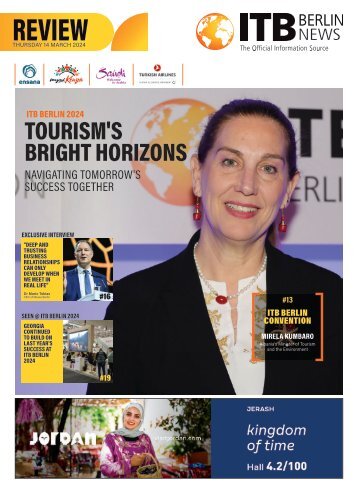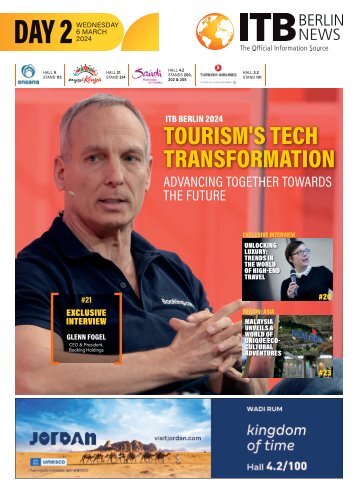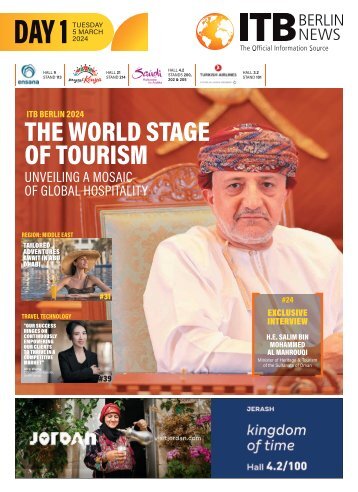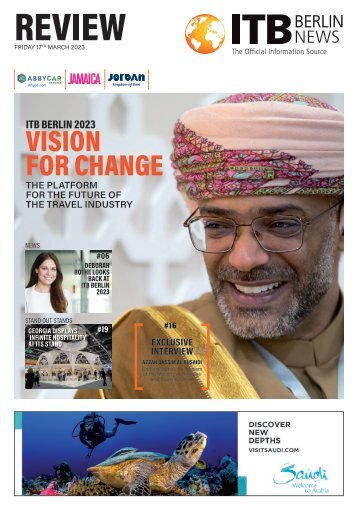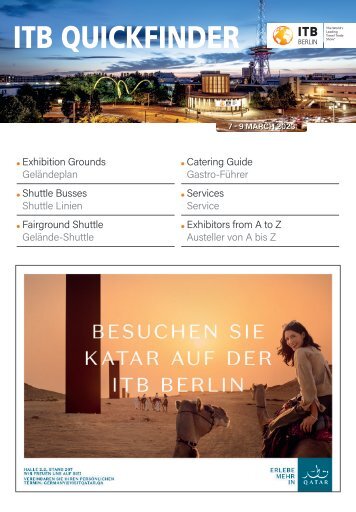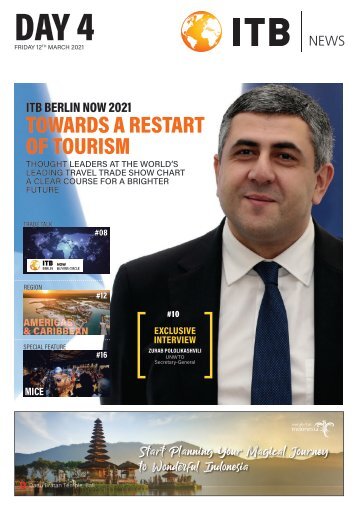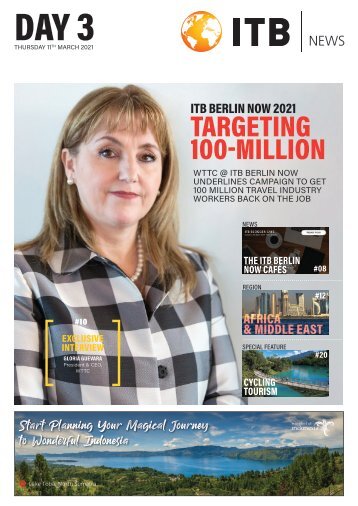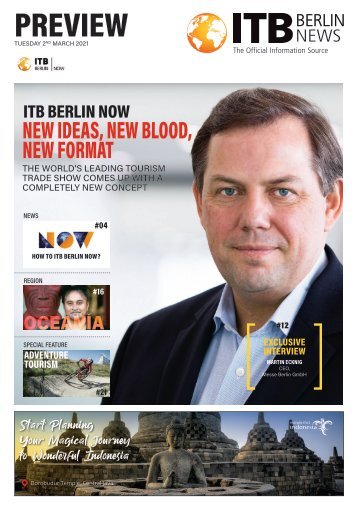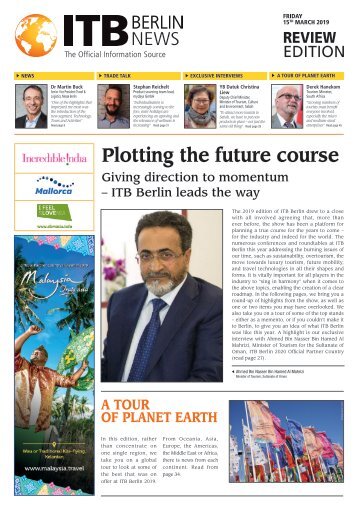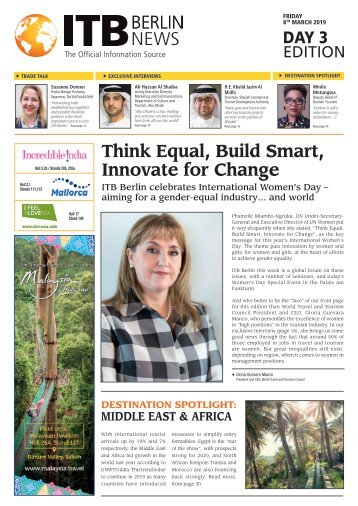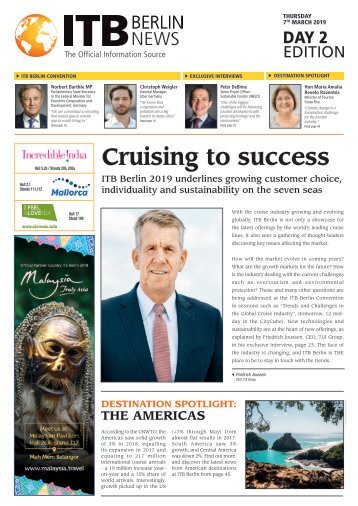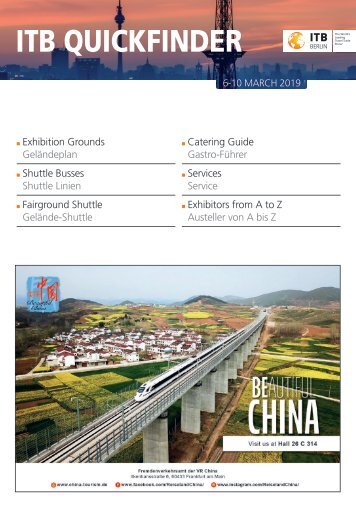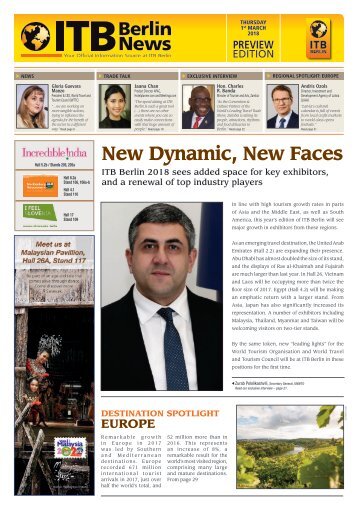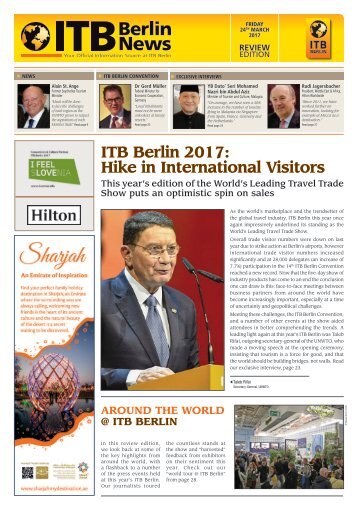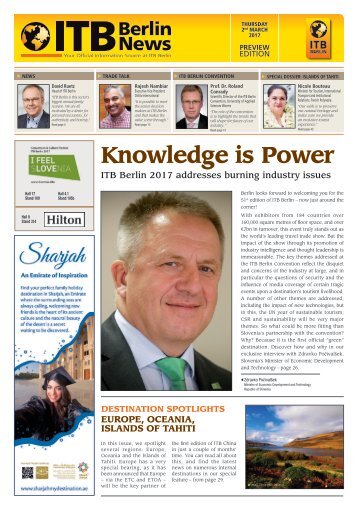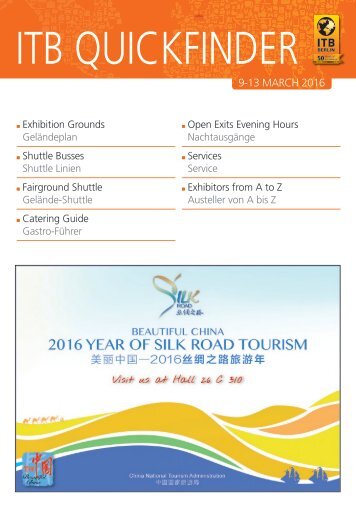
ITB Berlin News - Day 1
- Text
- Tourism
- Berlin
- Destination
- Destinations
- Sustainable
- Global
- Cultural
- Markets
- Hotels
- Botswana
AFRICA & MIDDLE EAST
AFRICA & MIDDLE EAST REGION 45 Najib Balala Cabinet Secretary for Tourism, Kenya Growth in Arrivals for Kenya Airport expansion and infrastructure improvement go hand in hand with tourism growth Throughout last year, Kenya witnessed a growth trajectory which the government hopes to maintain this year, holding all other factors constant. We asked Kenya’s Cabinet Secretary for Tourism Najib Balala to give us the latest details… The total consolidated arrivals for 2016 closed at 1,307,351, a 10.4% growth over 2015 that recorded 1,183,847. Our domestic segment continues to grow posting a total of 3.6 million bed nights being taken up by Kenyans in 2016 compared to 3.1 million in 2015, a 14.6% growth. A number of factors have contributed to the growth of the tourism sector in Kenya. They include the “charter incentive programme” for charters terminating in the coastal region of Kenya; improved security with the government allocating more resources towards security measures, reductions in park fees and visa waiver for children below 16 years of age to spur family travel. How is tourism infrastructure evolving? Infrastructure evolution is going hand in hand with the evolution/ growth in the tourism business. Some of the infrastructure development that has direct impact on tourism includes the expansion and modernisation of the Jomo Kenyatta International Airport. This will ease congestion at the airport by meeting its current and future demand. Traffic at the airport is growing at a rate of 12% per annum, and is expected to hit the 25 million mark by 2025. In the coastal part of Kenya, Malindi Airport is being expanded to enable flights to land directly into Malindi. The government has also commissioned Isiolo International Airport to handle heavy commercial flights and open up the northern part of the country to tourism and other economic benefits. Several air strips leading to tourism hot spots across the country are also under expansion and face-lifts. Roads leading to National Parks such as Maasai Mara are being constructed. The road connecting Samburu (on Mombasa road) and Kwale is now accessible for those driving to Diani, making it possible to save time at the Likoni ferry. More hotels and hostels are being built to cater for the mass segment, KENYA’S COMMITMENT TO STOPPING POACHING HAS BEEN DEMONSTRATED BY THE GOVERNMENT’S DESTRUCTION OF THE LARGEST STOCK-PILE OF IVORY IN THE WORLD including the expansion of conference facilities and convention centres. What is being done to combat poaching and foster wildlife conservation? Kenya’s commitment to stopping poaching has been demonstrated by the government’s destruction of the largest stock-pile of ivory in the world. Kenya, at the end of the year 2015 destroyed over 100 tones of ivory to underline its war against poaching. As such, the government has taken measures to curb poaching with the deployment of more resources including rangers to combat poaching as well as embracing technology in the monitoring of animal populations especially those of threatened species. The campaign includes the promotion of alternative incomes for communities living around game parks and wildlife reserves to ensure they are not a threat to natural habitats and expand the system of direct benefits to locals to include National Parks Hall 21.a / Stand 122 ITB BERLIN NEWS • Wednesday 8 th March 2017
- Page 1: WEDNESDAY 8 th MARCH 2017 DAY 1 EDI
- Page 4 and 5: 4 NEWS Gates Are Open, Arms Are ITB
- Page 6 and 7: 6 NEWS Exclusive Preview of Berlin
- Page 9: NEWS 9 New Exhibitors, New Ideas, N
- Page 13: NEWS 13 ADVERTORIAL Las Vegas Conti
- Page 17 and 18: NEWS 17 National Geographic World L
- Page 19 and 20: NEWS 19 Vanilla Islands Seek Chines
- Page 21 and 22: TRADE TALK 21 Tim Hentschel CEO, Ho
- Page 23 and 24: TRADE TALK 23 Florian Fleischer Hea
- Page 25 and 26: ITB BERLIN CONVENTION 25 Large-Scal
- Page 27 and 28: EXCLUSIVE INTERVIEW 27 Botswana: On
- Page 29 and 30: SPECIAL FEATURE TRANSPORT 29 Anothe
- Page 32 and 33: 32 SPECIAL FEATURE TRANSPORT ADVERT
- Page 34 and 35: 34 SPECIAL FEATURE TRANSPORT Dr Mic
- Page 37 and 38: SPECIAL FEATURE TRAVEL TECHNOLOGIES
- Page 39: AFRICA & MIDDLE EAST REGION 39 MAIN
- Page 43: AFRICA & MIDDLE EAST REGION 43 Eco-
- Page 47 and 48: AFRICA & MIDDLE EAST REGION 47 Egyp
- Page 49 and 50: AFRICA & MIDDLE EAST REGION 49 mont
- Page 51 and 52: AFRICA & MIDDLE EAST REGION 51 Moun
- Page 53 and 54: © Thomas Keller HOSPITALITY / REST
Inappropriate
Loading...
Mail this publication
Loading...
Embed
Loading...
